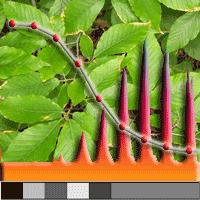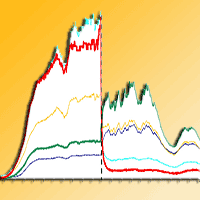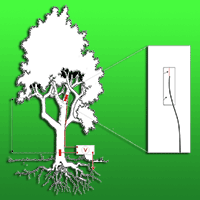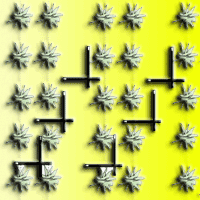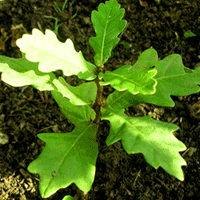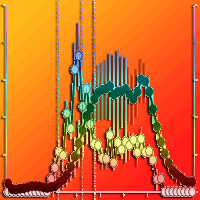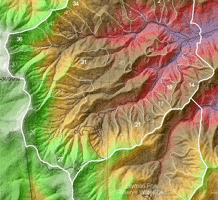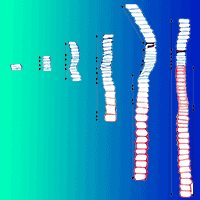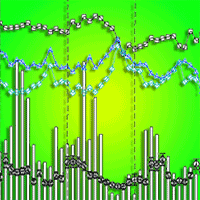Over the course of a year, tree physiological processes are not only directly affected by environmental conditions, but also by the tree’s own phenological stages. At the same time, phenological stages should, to a certain degree, reflect tree physiology. However, we have rather poor knowledge of the details of the interplay between phenology and ecophysiology. The objective of this study was to develop a better understanding of the links between phenology and ecophysiology. We investigated the degree to which various physiological processes are synchronized both with each other and with phenology and what information related to phenology can be obtained from instrumental ecophysiological measurements. Phenological observations, along with measurements of transmittance of photosynthetically active radiation (PAR), stem volume changes, sap flow and xylogenesis were conducted in a 45-year old European beech (Fagus sylvatica) stand in the Czech Republic. Results indicated that ecophysiology was tightly related with the phenological stage of the tree. Early spring phenological stages were closely linked with the beginning of cambial activity and the onset of sap flow, i.e., the first leaves were produced simultaneously with the beginning of stem radial growth. The highest xylem growth rates occurred in June, simultaneously with the highest sap flow rates. Cambial activity ceased with the onset of summer leaf coloring at the end of July, at the same time as the permanent decrease in sap flow rate. The end of cell wall maturation was linked to the onset of autumn leaf coloring. We conclude that instrumental measurements of tree and stand ecophysiology provided additional information better specifying the onset of particular phenostages. In our case, twelve permanently located sensors used to measure PAR transmittance captured leaf area development with acceptable accuracy, thus limiting the need for frequent visits to the forest site in the spring and autumn. Moreover, data from dendrometers showed linkages to bud break and the onset of leaf coloring. Therefore, ecophysiological measurements increased the effectiveness and accuracy of phenological observations and provided additional information about tree development in particular external conditions.
Keywords
, , , , ,
Citation
Urban J, Bednárová E, Plichta R, Gryc V, Vavrčík H, Hacura J, Fajstavr M, Kučera J (2014). Links between phenology and ecophysiology in a European beech forest. iForest 8: 438-447. - doi: 10.3832/ifor1307-007
Academic Editor
Giorgio Matteucci
Paper history
Received: Apr 07, 2014
Accepted: Sep 08, 2014
First online: Dec 15, 2014
Publication Date: Aug 02, 2015
Publication Time: 3.27 months
© SISEF - The Italian Society of Silviculture and Forest Ecology 2014
Open Access
This article is distributed under the terms of the Creative Commons Attribution-Non Commercial 4.0 International (https://creativecommons.org/licenses/by-nc/4.0/), which permits unrestricted use, distribution, and reproduction in any medium, provided you give appropriate credit to the original author(s) and the source, provide a link to the Creative Commons license, and indicate if changes were made.

Breakdown by View Type
(Waiting for server response...)
Article Usage
Total Article Views: 58620
(from publication date up to now)
Breakdown by View Type
HTML Page Views: 48282
Abstract Page Views: 3907
PDF Downloads: 4783
Citation/Reference Downloads: 39
XML Downloads: 1609
Web Metrics
Days since publication: 4034
Overall contacts: 58620
Avg. contacts per week: 101.72
Article Citations
Article citations are based on data periodically collected from the Clarivate Web of Science web site
(last update: Mar 2025)
Total number of cites (since 2015): 21
Average cites per year: 1.91
Publication Metrics
by Dimensions ©
Articles citing this article
List of the papers citing this article based on CrossRef Cited-by.
(1)
Allen RG, Pereira LS, Raes D, Smith M (1998)Crop evapotranspiration - Guidelines for computing crop water requirements. FAO Irrigation and drainage paper 56, FAO, Rome, Italy, pp. 300.
Gscholar
(2)
Backes K, Leuschner C (2000)Leaf water relations of competitive
Fagus sylvatica and
Quercus petraea trees during 4 years differing in soil drought. Canadian Journal of Forest Research 30 (3): 335-346.
CrossRef |
Gscholar
(3)
Basler D, Körner C (2012)Photoperiod sensitivity of bud burst in 14 temperate forest tree species. Agricultural and Forest Meteorology 165: 73-81.
CrossRef |
Gscholar
(4)
Bednárová E, Kučera J, Merklová L (2010)The onset and duration of vegetative phenological stages in European beech (
Fagus sylvatica L.) under changing conditions of the environment. Acta Universitatis Agriculturae et Silviculturae Mendelianae Brunensis 58 (4): 23-30.
CrossRef |
Gscholar
(5)
Bednárová E, Merklová L (2007)Vyhodnocení fenologie mladého smrkového porostu v oblasti Drahanská vrchovina [Phenology of young Norway spruce forest stand]. In: “Klima lesa” (Rožnovský J, Litschmann T, Vyskot I eds). Sborník Ref. - Mezinárodní Konf, Ceská bioklimatologická společnost, Krtiny, Czech Republic, pp. 54-58.
Gscholar
(6)
Bequet R, Campioli M, Kint V, Vansteenkiste D, Muys B, Ceulemans R (2011)Leaf area index development in temperate oak and beech forests is driven by stand characteristics and weather conditions. Trees 25 (5): 935-946.
CrossRef |
Gscholar
(7)
Bonan GB (1993)Importance of leaf area index and forest type when estimating photosynthesis in boreal forests. Remote Sensing of Environment 43 (3): 303-314.
CrossRef |
Gscholar
(8)
Cermák J, Deml M, Penka M (1973)A new method of sap flow rate determination in trees. Biologia Plantarum 15 (3): 171-178.
CrossRef |
Gscholar
(9)
Cermák J, Kučera J, Nadezhdina N (2004)Sap flow measurements with some thermodynamic methods, flow integration within trees and scaling up from sample trees to entire forest stands. Trees 18 (5): 529-546.
CrossRef |
Gscholar
(10)
Cermák J, Kucera J, Bauerle WL, Phillips N, Hinckley TM (2007)Tree water storage and its diurnal dynamics related to sap flow and changes in stem volume in old-growth Douglas-fir trees. Tree Physiology 27 (2): 181-198.
CrossRef |
Gscholar
(11)
Cochard H (2001)A new validation of the Scholander pressure chamber technique based on stem diameter variations. Journal of Experimental Botany 52 (359): 1361-1365.
CrossRef |
Gscholar
(12)
Cufar K, Prislan P, de Luis M, Gričar J (2008)Tree-ring variation, wood formation and phenology of beech (
Fagus sylvatica) from a representative site in Slovenia, SE Central Europe. Trees 22 (6): 749-758.
CrossRef |
Gscholar
(13)
Czech Hydrometeorological Institute (1987)Metodologická príručka č. 10: Návod pro činnost meteorologických stanic - Lesní rostliny. [Methodology No. 10: Instructions for meteorological stations - forest plants]. Publishing house of Czech Hydrometeorological Institute, Prague, Czech Republic, pp. 111.
Gscholar
(14)
Deslauriers A, Rossi S, Anfodillo T (2007)Dendrometer and intra-annual tree growth: what kind of information can be inferred? Dendrochronologia 25 (2): 113-124.
CrossRef |
Gscholar
(15)
Dietze MC, Sala A, Carbone MS, Czimczik CI, Mantooth JA, Richardson AD, Vargas R (2014)Nonstructural carbon in woody plants. Annual Review of Plant Biology 65 (1): 667-687.
CrossRef |
Gscholar
(16)
Drew DM, Downes GM (2009)The use of precision dendrometers in research on daily stem size and wood property variation: a review. Dendrochronologia 27: 159-172.
CrossRef |
Gscholar
(17)
Granier A, Reichstein M, Bréda N, Janssens I, Falge E, Ciais P, Grünwald T, Aubinet M, Berbigier P, Bernhofer C, Buchmann N, Facini O, Grassi G, Heinesch B, Ilvesniemi H, Keronen P, Knohl A, Köstner B, Lagergren F, Lindroth A, Longdoz B, Loustau D, Mateus J, Montagnani L, Nys C, Moors E, Papale D, Peiffer M, Pilegaard K, Pita G, Pumpanen J, Rambal S, Rebmann C, Rodrigues A, Seufert G, Tenhunen J, Vesala T, Wang Q (2007)Evidence for soil water control on carbon and water dynamics in European forests during the extremely dry year: 2003. Agricultural and Forest Meteorology 143 (1-2): 123-145.
CrossRef |
Gscholar
(18)
Gu L, Post WM, Baldocchi D, Andy Black T, Verma SB, Vesala T, Wofsy SC (2003)Phenology of vegetation photosynthesis. In: “Phenology: An Integrative Environmental Science” (schwarz MD ed). Tasks for Vegetation Science 39, Springer, The Netherlands, pp. 467-485.
CrossRef |
Gscholar
(19)
Hájková L, Voženílek V, Tolasz R (2012)Atlas of the phenological conditions in Czechia (1st edn). Publishing house of Czech Hydrometeorological Institute, Prague, Czech Republic, pp. 311.
Gscholar
(20)
Hardy J, Melloh R, Koenig G, Marks D, Winstral A, Pomeroy J, Link T (2004)Solar radiation transmission through conifer canopies. Agricultural and Forest Meteorology 126 (3-4): 257-270.
CrossRef |
Gscholar
(21)
Hassika P, Berbigier P (1998)Annual cycle of photosynthetically active radiation in maritime pine forest. Agricultural and Forest Meteorology 90 (3): 157-171.
CrossRef |
Gscholar
(22)
Hinckley TM, Teskey RO, Duhme F, Richter H (1981)Temperate hardwood forests. In: “Water Deficits and Plant Growth. Vol VI: Woody Plant Communities” (Kozlowski TT ed). Academic Press, London, UK, pp. 153-208.
Online |
Gscholar
(23)
Holtta T, Makinen H, Nojd P, Makela A, Nikinmaa E (2010)A physiological model of softwood cambial growth. Tree Physiology 30 (10): 1235-1252.
CrossRef |
Gscholar
(24)
Ježík M, Blaženec M, Letts MG, Ditmarová L, Sitková Z, Strelcová K (2014)Assessing seasonal drought stress response in Norway spruce (
Picea abies (L.) Karst.) by monitoring stem circumference and sap flow. Ecohydrology (early view).
CrossRef |
Gscholar
(25)
Kozlowski TT, Pallardy S (1997)Physiology of woody plants. Academic Press, S. Diego, CA, USA, pp. 427.
Gscholar
(26)
Kučera J, Bednárová E, Kamlerová K (2002)Vertical profile of needle biomas and pnetration of radiation through the spruce stand. Ekologia 21: 107-121.
Gscholar
(27)
Kučera J, CŒermák J, Penka M (1977)Improved thermal method of continual recording the transpiration flow rate dynamics. Biologia Plantarum 19 (6): 413-420.
CrossRef |
Gscholar
(28)
Lemoine D, Cochard H, Granier A (2002)Within crown variation in hydraulic architecture in beech (
Fagus sylvatica L.): evidence for a stomatal control of xylem embolism . Annals of Forest Science 59 (1): 19-27.
CrossRef |
Gscholar
(29)
Leuschner C, Backes K, Hertel D, Schipka F, Schmitt U, Terborg O, Runge M (2001)Drought responses at leaf, stem and fine root levels of competitive
Fagus sylvatica L. and
Quercus petraea (Matt.) Liebl. trees in dry and wet years. Forest Ecology and Management 149 (1-3): 33-46.
CrossRef |
Gscholar
(30)
Leuschner C, Meier IC, Hertel D (2006)On the niche breadth of
Fagus sylvatica: soil nutrient status in 50 central European beech stands on a broad range of bedrock types . Annals of Forest Science 63 (4): 355-368.
CrossRef |
Gscholar
(31)
Löf M, Welander N (2000)Carry-over effects on growth and transpiration in
Fagus sylvatica seedlings after drought at various stages of development. Canadian Journal of Forest Research 30 (3): 468-475.
CrossRef |
Gscholar
(32)
Lupi C, Morin H, Deslauriers A, Rossi S (2012)Xylogenesis in black spruce: does soil temperature matter? Tree Physiology 32 (1): 74-82.
CrossRef |
Gscholar
(33)
Mäkinen H, Seo JW, Nöjd P, Schmitt U, Jalkanen R (2008)Seasonal dynamics of wood formation: a comparison between pinning, microcoring and dendrometer measurements. European Journal of Forest Research 127 (3): 235-245.
CrossRef |
Gscholar
(34)
Meier IC, Leuschner C (2008)Leaf size and leaf area index in
Fagus sylvatica forests: competing effects of precipitation , temperature , and nitrogen availability. Ecosystems 11 (5): 655-669.
CrossRef |
Gscholar
(35)
Menzel A (2000)Trends in phenological phases in Europe between 1951 and 1996. International Journal of Biometeorology 44 (2): 76-81.
CrossRef |
Gscholar
(36)
Michelot A, Simard S, Rathgeber C, Dufrene E, Damesin C (2012)Comparing the intra-annual wood formation of three European species (
Fagus sylvatica, Quercus petraea and
Pinus sylvestris) as related to leaf phenology and non-structural carbohydrate dynamics. Tree Physiology 32 (8): 1033-1045.
CrossRef |
Gscholar
(37)
Mussche S, Samson R, Nachtergale L, De Schrijver A, Lemeur R, Lust N (2001)A comparison of optical and direct methods for monitoring the seasonal dynamics of leaf area index in deciduous forests. Silva Fennica 35 (4): 373-384.
CrossRef |
Gscholar
(38)
Ogasa M, Miki N, Yoshikawa K (2010)Changes of hydraulic conductivity during dehydration and rehydration in
Quercus serrata Thunb. and
Betula platyphylla var.
japonica Hara: the effect of xylem structures. Tree Physiology 30 (5): 608-617.
CrossRef |
Gscholar
(39)
Pallardy S (2008)Physiology of woody plants (3rd edn). Academic Press, London, UK, pp. 454.
Gscholar
(40)
Peuke AD, Schraml C, Hartung W, Rennenberg H (2002)Identification of drought-sensitive beech ecotypes by physiological parameters. New Phytologist 154 (2): 373-387.
CrossRef |
Gscholar
(41)
Prislan P, Schmitt U, Koch G, Gričar J, Ä ufar K (2011)Seasonal ultrastructural changes in the cambial zone of beech (
Fagus sylvatica) grown at two different altitudes. IAWA Journal 32: 443-459.
Online |
Gscholar
(42)
Rossi S, Menardi R, Anfodillo T (2006)Trephor: a new tool for sampling microcores from tree stems. IAWA Journal 27 (1): 89-97.
CrossRef |
Gscholar
(43)
Rossi S, Deslauriers A, Anfodillo T, Carraro V (2007)Evidence of threshold temperatures for xylogenesis in conifers at high altitudes. Oecologia 152 (1): 1-12.
CrossRef |
Gscholar
(44)
Saigusa N, Yamamoto S, Murayama S, Kondo H, Nishimura N (2002)Gross primary production and net ecosystem exchange of a cool-temperate deciduous forest estimated by the eddy covariance method. Agricultural and Forest Meteorology 112 (3-4): 203-215.
CrossRef |
Gscholar
(45)
Sass-Klaassen U, Sabajo CR, den Ouden J (2011)Vessel formation in relation to leaf phenology in pedunculate oak and European ash. Dendrochronologia 29 (3): 171-175.
CrossRef |
Gscholar
(46)
Scartazza A, Moscatello S, Matteucci G, Battistelli A, Brugnoli E (2013)Seasonal and inter-annual dynamics of growth, non-structural carbohydrates and C stable isotopes in a Mediterranean beech forest. Tree Physiology 33 (7): 730-742.
CrossRef |
Gscholar
(47)
Schmitt U, Möller R, Eckstein D (2000)Seasonal wood formation dynamics of beech (
Fagus sylvatica L.) and black locust (
Robinia pseudoacacia L.) as determined by the “pinning’” technique. Angewandte Botanik 74:10-16.
Online |
Gscholar
(48)
Steppe K, De Pauw DJ, Lemeur R (2008)Validation of a dynamic stem diameter variation model and the resulting seasonal changes in calibrated parameter values. Ecological Modelling 218 (3-4): 247-259.
CrossRef |
Gscholar
(49)
Strelcová K, Priwitzer T, Mindáš J (2006)Fenologické fázy a transpirácia buka lesnéhov horskom zmiešanom lese [Phenological stages and transpiration of European beech in the mountain mixed forest]. In: “Fenologická odezva promÄ nlivosti podnebí” (Rožnovský J, Litschmann T, Vyskot I eds). Publishing house of Czech Hydrometeorological Institute, Prague, Czech Republic, pp. 1-14. [in Slovak]
Gscholar
(50)
Suzuki H, Yoda K, Suzuki M (1996)Phenological comparison of the onset of vessel formation between ring-porous and diffuse-porous deciduous trees in a Japanese temperate forest. IAWA Journal 17 (4): 431-444.
CrossRef |
Gscholar
(51)
Vavrčík H, Gryc V, Menšík L, Baar J (2013)Xylem formation in
Fagus sylvatica during one growing season. Dendrobiology 69: 69-75.
Online |
Gscholar
(52)
Viewegh J, Kusbach M, Mikeska M (2003)Czech forest ecosystem classification. Journal of Forest Science 49: 74-82.
Online |
Gscholar
(53)
Vose JM, Clinton BD, Sullivan NH, Bolstad PV (1995)Vertical leaf area distribution, light transmittance, and application of the Beer-Lambert Law in four mature hardwood stands in the southern Appalachians. Canadian Journal of Forest Research 25 (6): 1036-1043.
CrossRef |
Gscholar
(54)
Wareing PF (1953)Growth studies in woody species. V. Photoperiodism in dormant buds of
Fagus sylvatica L. Physiologia Plantarum 6 (4): 692-706.
CrossRef |
Gscholar
(55)
Whitehead D (1998)Regulation of stomatal conductance and transpiration in forest canopies. Tree Physiology 18 (8-9): 633-644.
CrossRef |
Gscholar
(56)
Zweifel R, Hasler R (2001)Dynamics of water storage in mature subalpine
Picea abies: temporal and spatial patterns of change in stem radius. Tree Physiology 21 (9): 561-569.
CrossRef |
Gscholar
(57)
Zweifel R, Item H, Hasler R (2001)Link between diurnal stem radius changes and tree water relations. Tree Physiology 21 (12-13): 869-877.
CrossRef |
Gscholar
